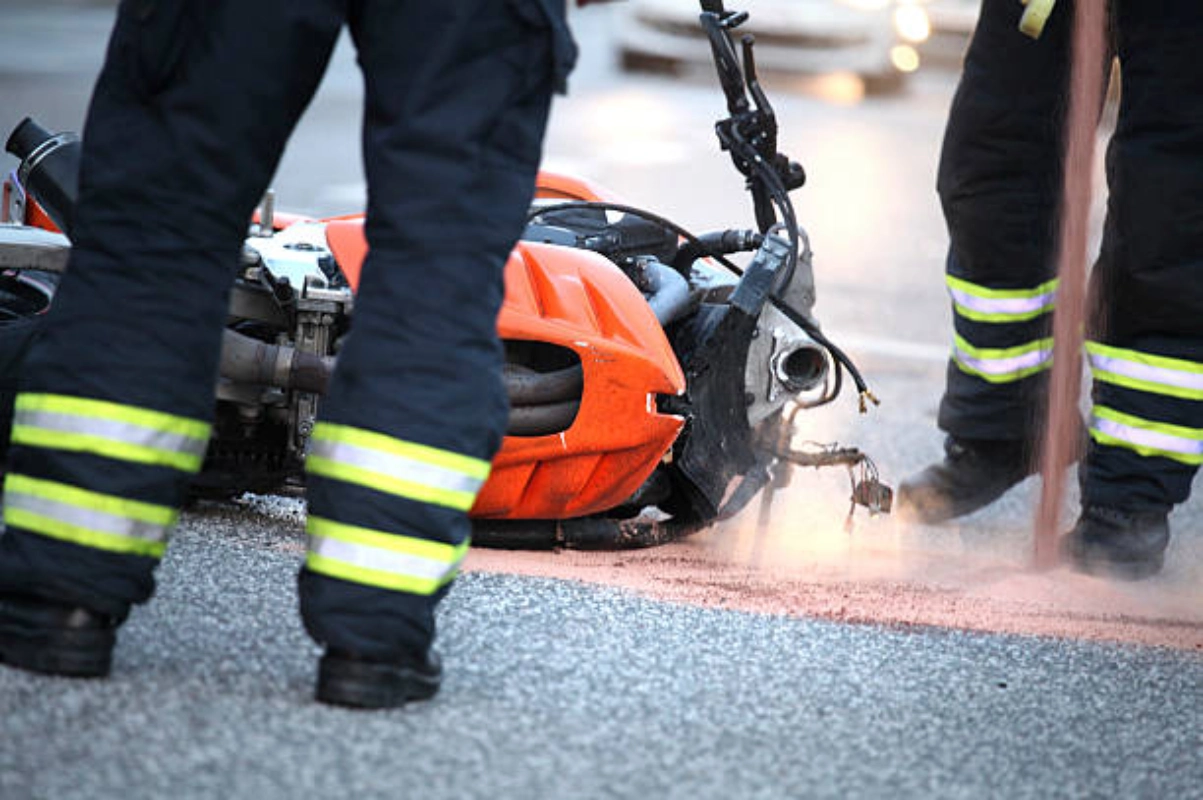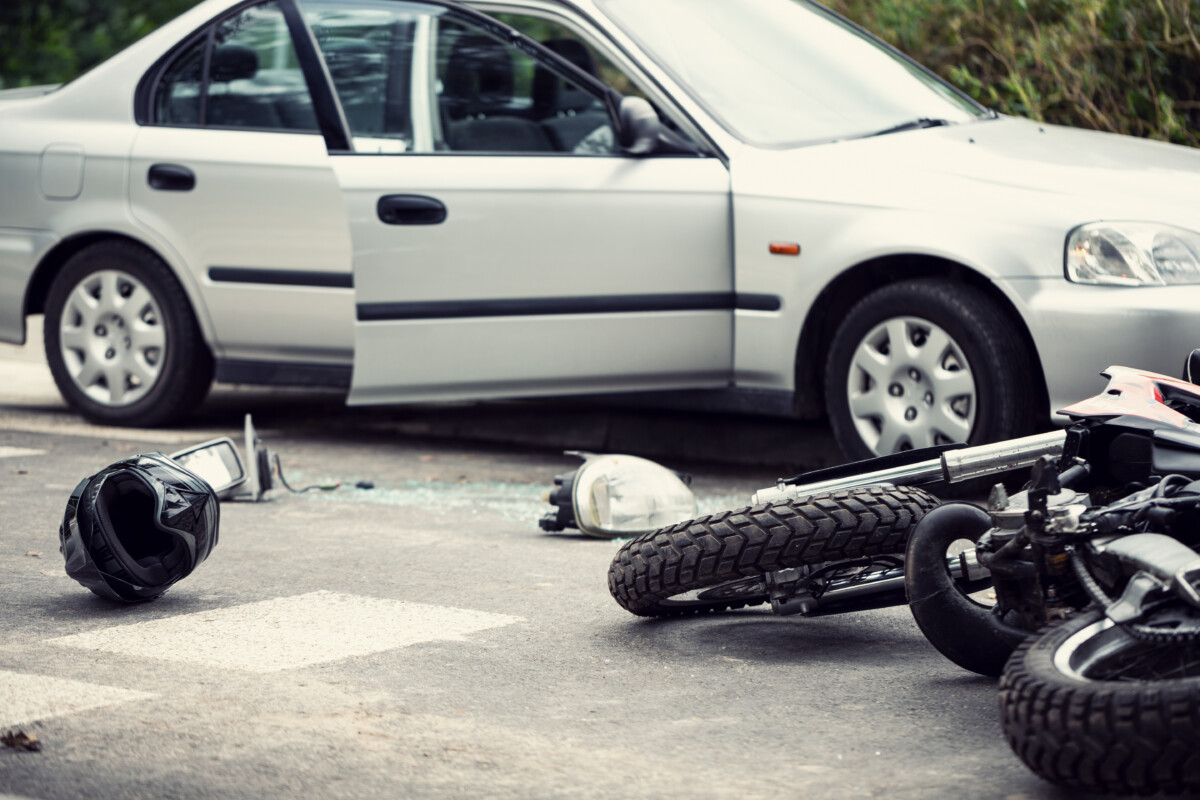Motorcycle accidents remain one of the most hazardous types of roadway collisions. According to the
National Highway Traffic Safety Administration (NHTSA), motorcyclists are
28 times more likely to die in a crash than occupants of cars. But what exactly makes motorcycle accidents so dangerous?
This guide breaks down the most common reasons, provides tips for safety, and discusses what to do after an accident to protect your rights and health.
📌
Need legal help after a motorcycle accident? Visit our partner site at
Legal Case Review to explore your legal options today.

Ready to connect with top legal professionals? Get immediate support— Call us at 877-550-8911.
Connect with Our Legal Team
1. The Vulnerability of Motorcyclists
Unlike drivers in passenger vehicles, motorcyclists have no steel cage, airbags, or crumple zones to protect them. In the event of an accident, the rider is
completely exposed to the impact, increasing the likelihood of serious injuries like:
- Traumatic brain injuries (TBIs)
- Spinal cord damage
- Road rash
- Bone fractures
Even with helmets and riding gear, a motorcyclist has little defense against larger, heavier vehicles.
2. Lack of Protection Compared to Cars
Passenger cars come equipped with safety features designed to protect occupants, including:
- Seat belts
- Airbags
- Reinforced frames
Motorcycles lack all of these. A collision with a car or a fixed object can send a motorcyclist flying through the air or skidding along the pavement. This level of exposure is one of the core reasons motorcycle accidents are so dangerous.
👉 Learn more about vehicle safety standards on the
NHTSA official site.
3. High Speed and Impact Forces
Motorcycles are built for speed and agility, but high speed significantly raises the stakes during an accident. A rider going 60 mph has much less time to react than one at slower speeds, and the kinetic energy on impact is far greater.
In many crashes:
- The rider is thrown off the bike
- The motorcycle continues moving, sometimes hitting other vehicles
- Severe injuries occur even at moderate speeds
This combination of speed and lack of protection makes motorcycle collisions especially deadly.
4. Road Conditions and Hazards
Motorcycles are more sensitive to road imperfections. While a pothole might just jolt a car, it can completely destabilize a motorcycle. Other common road hazards include:
- Gravel or sand
- Oil slicks
- Uneven pavement
- Wet or icy roads
- Construction zones with unclear signage
These small obstacles can cause a rider to lose control, especially if they’re traveling at high speeds or lack experience.
5. Driver Awareness and Visibility Issues
One of the most common phrases after a motorcycle accident is:
Motorcycles are smaller and easier to overlook, especially in a driver’s blind spots. Visibility issues are especially common when:
- Drivers make sudden lane changes
- Cars turn left at intersections without noticing an oncoming motorcycle
- Traffic is congested and chaotic
To improve visibility, motorcyclists are advised to wear high-visibility gear and keep their headlights on even during the day. However,
driver education is also critical in reducing these types of accidents.
6. Inexperience and Risky Behavior
New or untrained riders are significantly more likely to crash. Common mistakes include:
- Overestimating their ability
- Misjudging corners
- Improper braking
- Riding without protective gear
Risky behaviors such as lane splitting at high speeds, weaving through traffic, or riding under the influence also contribute to many accidents. Riding a motorcycle requires
specialized training, and inexperience can quickly turn fatal.
 7. Consequences of Motorcycle Accidents
7. Consequences of Motorcycle Accidents
The aftermath of a motorcycle accident can be life-altering. Beyond the initial physical trauma, victims often face:
- Long-term rehabilitation
- Emotional and psychological scars
- Lost wages or inability to return to work
- Expensive medical bills
Families may also bear emotional and financial burdens. For many, legal action becomes necessary to secure compensation for their losses.
If you’ve been injured in a motorcycle accident, it’s essential to
consult with an experienced injury attorney. Visit
Legal Case Review to connect with a lawyer who can help you evaluate your claim.
FAQs About Motorcycle Accidents
1. Why are motorcycle accidents more deadly than car accidents?
Motorcycles offer little protection, leaving riders exposed to direct impacts. This results in higher rates of severe injuries and fatalities.
2. What injuries are most common in motorcycle accidents?
Common injuries include head trauma, spinal cord damage, broken bones, and severe road rash.
3. Can a motorcycle accident victim sue for damages?
Yes. If the accident was caused by someone else’s negligence, the victim may be entitled to compensation for medical bills, pain and suffering, lost income, and more.
4. How can motorcyclists protect themselves on the road?
Wearing a DOT-approved helmet, using protective gear, taking safety courses, and avoiding risky behaviors significantly reduce the risk of injury or death.
5. Who is usually at fault in motorcycle accidents?
It depends on the circumstances. Often, car drivers are at fault due to failure to yield, improper lane changes, or distracted driving. However, motorcyclists may also contribute to accidents through speeding or reckless behavior.
Final Thoughts
Motorcycle accidents are uniquely dangerous due to a combination of factors—lack of protection, road hazards, high speeds, and visibility issues. Every rider should be aware of these risks and take proactive steps to reduce their chances of being involved in an accident.
For those who have already experienced a crash, it’s vital to understand your legal rights and seek support. Contact
Legal Case Review to get connected with attorneys who specialize in motorcycle injury claims and can guide you through the process.
Would you like help turning this into a downloadable PDF or publishing it to your blog?
Don’t wait to secure the legal representation you deserve. Visit Legal Case Review today for free quotes and tailored guidance, or call 877-550-8911 for immediate assistance.
Scott Thompson is an authoritative industry veteran, CEO and Founder of Astoria Company. With his extensive experience spanning decades in the online advertising industry, he is the driving force behind Astoria Company. Under his leadership, Astoria Company has emerged as a distinguished technology advertising firm specializing in domain development, lead generation, and pay-per-call marketing. Thompson is widely regarded as a technology marketing expert and domain investor, with a portfolio comprising over 570 domains.

 7. Consequences of Motorcycle Accidents
7. Consequences of Motorcycle Accidents


